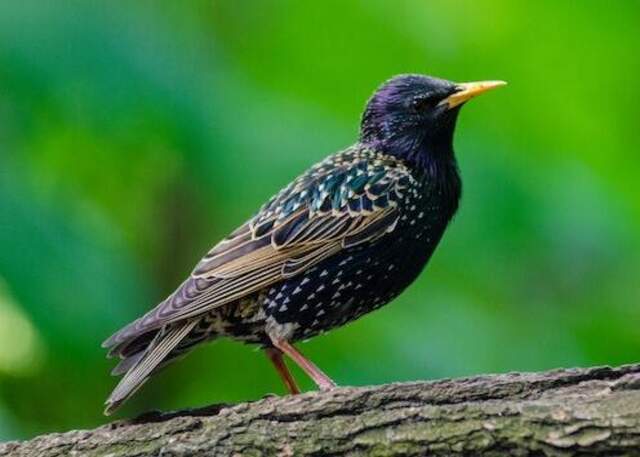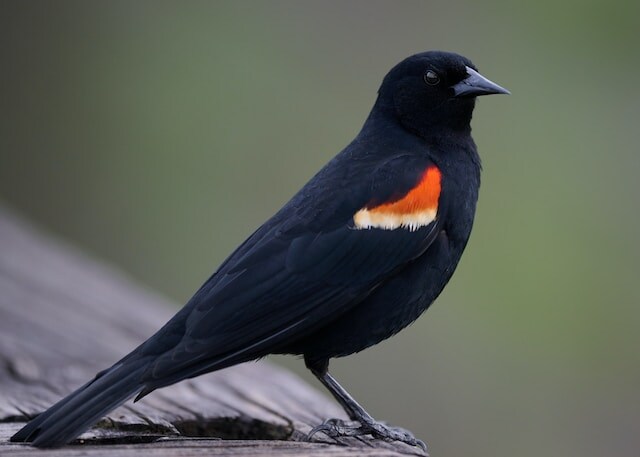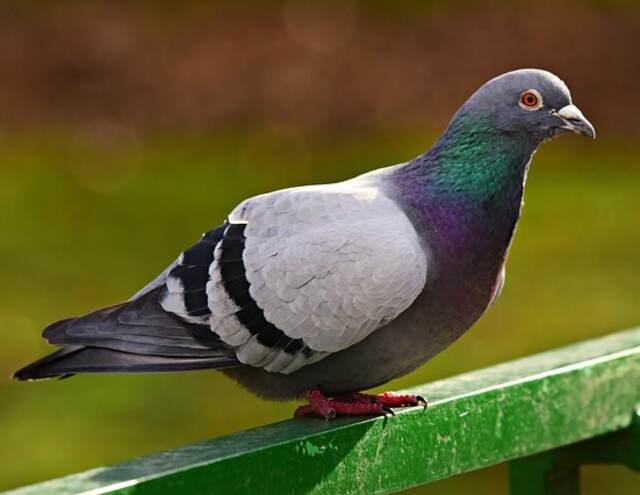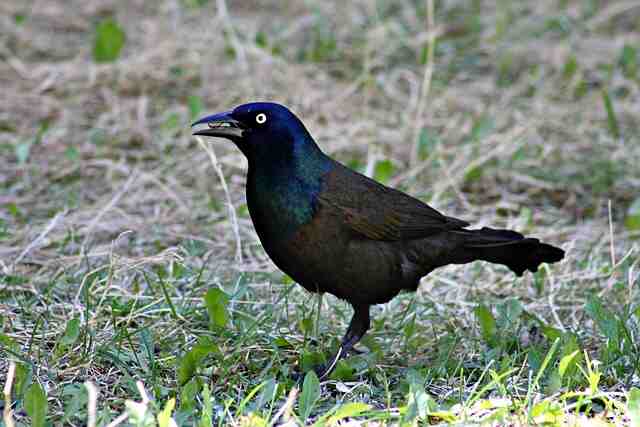Growing crops is vital to our economy, and farmers across the United States face many challenges, including bird pest problems caused by crop-damaging birds. These birds destroy the crops, leading to significant losses and a negative impact on the agricultural industry. However, there are various bird control methods that farmers can use to protect their crops effectively.
In this article, I will explore the ecological and agricultural effects of birds that eat crops in the United States. We will examine the challenges farmers face due to bird pest problems and the various bird control methods used to protect crops. Additionally, we will look at the most common bird species in the US that are known to eat crops and the regions where they pose the greatest threat to agricultural production.
Table of Contents
- 1 Key Takeaways
- 2 The Ecological Importance of Birds That Eat Crops
- 3 Agricultural Damage Caused by Birds That Eat Crops
- 4 Common Birds That Eat Crops in the US
- 5 Understanding Bird Control Methods
- 6 Sustainable Farming Practices for Bird Protection
- 7 Legal Considerations and Conservation Efforts
- 8 Case Studies: Successful Bird Damage Prevention
- 9 Conclusion
- 10 FAQs
- 10.1 What are some common bird species in the United States that eat crops?
- 10.2 What is the ecological importance of birds that eat crops?
- 10.3 How do birds that eat crops cause agricultural damage?
- 10.4 What are some effective bird control methods?
- 10.5 How can farmers protect their crops from bird damage while promoting bird conservation?
- 10.6 What legal considerations are there regarding bird control and conservation efforts?
- 10.7 Can you provide examples of successful bird damage prevention efforts?
- 10.8 How can farmers strike a balance between crop protection and bird conservation?
- 11 Author
Key Takeaways
- Birds that eat crops can cause significant damage to agricultural production in the United States.
- Farmers face many challenges due to bird pest problems, including economic losses.
- Effective bird control methods can help protect crops from damaging birds.
- Understanding the feeding habits of crop-damaging birds can help farmers develop effective bird damage prevention strategies.
- A balanced approach that considers both bird conservation and crop protection is crucial for sustainable agriculture practices.

The Ecological Importance of Birds That Eat Crops
As I discussed previously, birds that eat crops can cause significant damage to agricultural production. However, it’s essential to recognize that these birds also play a crucial ecological role in maintaining biodiversity.
Many bird species that consume crops also feed on insects and other pests, providing natural pest control services to farmers. They also help distribute seeds and pollinate plants, contributing to the growth and diversity of plant communities.
It’s crucial to strike a balance between protecting crops and conserving bird populations. While damaging birds in agriculture can result in significant financial losses, their conservation is vital to maintain a healthy ecosystem and promote sustainable agricultural practices.
The Role of Bird Conservation in Agriculture
Bird conservation efforts can have a significant impact on agricultural production. By protecting habitat, implementing bird-friendly practices, and minimizing bird mortality, farmers can enhance the ecological value of their land while also reducing crop damage.
Furthermore, promoting bird conservation can have economic benefits for farmers. Ecotourism and birdwatching are growing industries, and farms that prioritize bird conservation can attract visitors and generate additional revenue streams.
In summary, while birds that eat crops can pose significant challenges for agricultural production, it’s vital to recognize their ecological importance and strive for a balanced approach that prioritizes both crop protection and bird conservation efforts.
Agricultural Damage Caused by Birds That Eat Crops
Birds that eat crops can cause significant damage to agricultural production, leading to economic losses for farmers. According to the USDA National Agricultural Statistics Service, bird damage to crops in the United States cost farmers an estimated $944 million in 2019.
The impact on specific crops can vary widely. For example, in 2018, the USDA reported that bird damage to blueberries in Michigan had reached 40%, while bird damage to sweet cherries in Utah had exceeded 70%. Other crops that are susceptible to bird damage include grapes, apples, and sunflowers, to name a few.
“Birds can cause devastating losses in a short amount of time,” says Dr. George Linz, an avian ecologist at the USDA Animal and Plant Health Inspection Service.
Agricultural damage caused by birds that eat crops can take many forms, including:
- Birds consuming and damaging fruit crops before they are harvested, leading to significant yield losses.
- Birds feeding on newly planted seeds, preventing germination or destroying emerging seedlings.
- Birds pecking at crops, creating physical damage that can lead to secondary infections or the loss of the entire crop.
To minimize bird-related agricultural damage, farmers often use a combination of bird damage prevention methods. These can include:
- Physical barriers: Netting, fencing, and other physical barriers can be used to exclude birds from crop areas.
- Sound devices: Devices that produce distress calls or predator sounds can deter birds from an area.
- Scare tactics: Visual deterrents, such as scarecrows or reflective tape, can discourage birds from entering crop areas.
- Habitat modification: Creating bird-friendly habitats adjacent to crop areas can help attract birds away from crop areas.
The most effective bird damage prevention methods can vary based on several factors, including the bird species involved, the crop type, and the local ecology.
Effective bird damage prevention can require careful planning and implementation. Dr. Linz notes that “It’s not a one-size-fits-all approach. You need to customize your solution to fit the situation.”

Common Birds That Eat Crops in the US
Several bird species can cause significant crop damage, making them a major concern for farmers in the United States. Some of the most common crop-damaging birds in the country include:
| Bird Species | Feeding Habits | Regions |
|---|---|---|
| European starling | Feeds on various crops, including fruits, berries, and grains | Found throughout the country |
| Red-winged blackbird | Feeds on grains, corn, and soybeans | Found in the Midwest and Northeast regions |
| Crows | Feeds on various crops, including fruits, grains, and vegetables | Found throughout the country |
| Pigeons | Feeds on various crops, including fruits, grains, and vegetables | Found throughout the country |
These bird species can cause significant losses to farmers, and their populations can quickly multiply under favorable conditions, making them difficult to manage. It is important for farmers to identify the species that pose the greatest threat to their crops and implement effective bird control strategies to minimize damage.
Understanding Bird Control Methods
When it comes to protecting crops from bird damage, there are numerous bird control methods available. Farmers must choose the most effective bird management techniques for their specific crop type, bird species, and location. In this section, I will discuss some of the most common bird control methods:
Physical Deterrents
Physical bird deterrents are structures built to keep birds away from crops. Some farmers use bird netting, which is stretched over the crop and attached to poles, to prevent birds from accessing the crop. Other physical deterrents include scarecrows, reflective tape, and predator decoys.
Sound Devices
Sound devices produce noises that birds find unpleasant, causing them to fly away from the area. Some sound devices emit bird distress calls or predator sounds to scare away birds. Others play music or use ultrasonic waves to deter birds.
Bird Management Techniques
Some bird management techniques involve modifying the crop itself. For example, farmers can use decoy crops, which are planted to attract birds away from the main crop. Other bird management techniques include crop rotation and the use of bird repellent sprays.
Professional Bird Control Services
For some farmers, the most effective way to manage bird damage is to hire a professional bird control service. These companies use a variety of methods, such as trapping and relocating birds, to protect crops from bird damage.
Each bird control method has its pros and cons, and farmers must weigh these carefully when choosing the most appropriate method for their situation. Ultimately, it is essential to select a bird control method that balances the need for crop protection with the conservation of bird populations.
Sustainable Farming Practices for Bird Protection
Protecting crops from birds while supporting bird populations is critical to maintaining long-term agricultural sustainability. Instead of focusing solely on bird damage prevention, farmers can implement sustainable farming practices that promote bird conservation and create a safe and thriving environment for both crops and birds. Here are some strategies for crop protection from birds:
Habitat Management
Creating and maintaining bird-friendly habitats on farms is an excellent way to promote bird populations while protecting crops. Farmers can plant native vegetation and incorporate natural elements such as ponds, hedges, and trees. These elements create a diverse and healthy ecosystem that attracts birds while providing a living space that’s away from crops.
Scare Tactics
Scare tactics are an effective and affordable way to minimize bird damage. Farmers can use visual deterrents such as scarecrows, reflective tape, and balloons that deter birds from landing on crops. Ultrasonic devices and wind turbines that create noise are also effective in repelling birds.
Collaborative Efforts
Collaborative efforts between farmers and conservation organizations can help promote bird conservation and minimize crop damage. Farmers can work with local birdwatching groups and bird conservation organizations to monitor bird populations and habitats. These groups can provide farmers with valuable information, resources, and guidance on sustainable bird protection methods.
Alternative Crops
Planting alternative crops that birds are less likely to consume can be an effective way to minimize bird damage. Farmers can plant crops such as sorghum, sunflowers, or millet, which have a lower risk of attracting birds. These crops not only minimize bird damage, but they can also increase biodiversity on farms.
Sustainable farming practices that protect crops from bird damage while supporting bird populations are essential to maintaining the ecological balance and promoting long-term agricultural sustainability. Through habitat management, scare tactics, collaborative efforts, and alternative crops, farmers can minimize bird damage while creating a thriving environment for both crops and birds.

Legal Considerations and Conservation Efforts
As we explore bird control methods and the economic impact of bird pest problems, it’s essential to consider the legal aspects and conservation efforts surrounding bird conservation. The United States has several federal and state laws in place to protect birds and their habitats.
Bird Conservation Laws in the US
The Migratory Bird Treaty Act of 1918 and the Bald and Golden Eagle Protection Act of 1940 are two federal laws that protect birds in the US. These laws make it illegal to harm, kill, or take migratory birds or eagles without a permit, with few exceptions. The Endangered Species Act of 1973 also provides protection to endangered and threatened species of birds.
Additionally, many states have their own laws and regulations to protect birds and their habitats. For example, California’s Fish and Game Code prohibits taking any bird or its parts, nests or eggs, except as authorized by the law. Violations of these laws can result in hefty fines and even imprisonment.
Bird Conservation Efforts
Several organizations and initiatives are dedicated to the conservation of birds, including those that eat crops. The National Audubon Society, for example, is a non-profit organization that focuses on bird conservation and advocacy. They work with farmers and other landowners to provide habitat management advice to help promote sustainable agricultural practices while also supporting bird populations.
Other organizations, such as the Smithsonian Migratory Bird Center, conduct research on migratory bird populations and their habitats to better understand their needs and develop conservation strategies. The US Department of Agriculture (USDA) also provides resources and funding for bird conservation efforts.
A Balanced Approach
While it is important to protect crops from bird damage, it’s equally critical to support bird conservation efforts. By adopting sustainable farming practices and implementing effective bird control methods, farmers can strike a balance between crop protection and bird conservation. After all, birds that eat crops play a vital role in maintaining biodiversity and contribute to a healthy ecosystem.
Case Studies: Successful Bird Damage Prevention
Implementing effective bird damage prevention strategies is crucial in protecting crops from bird damage. In this section, we will look at some case studies that highlight successful bird control methods used by farmers in the United States.
Case Study 1: Blueberry Crop Protection
One of the most common bird species known for eating crops is the American Robin. Blueberry farmers in Oregon found that using physical deterrents, such as bird netting, reduced crop losses by up to 95%. The netting was placed over the blueberry bushes, preventing the birds from accessing the ripe fruit. This method was not only effective in protecting the crops but also minimized the need for chemical pesticides, thereby reducing the ecological impact of farming.
Case Study 2: Sunflower Crop Protection
Sunflower seeds are a favorite food for many bird species, including blackbirds, grackles, and sparrows. Farmers in North Dakota found that using a combination of visual and sound deterrents, such as bird scarecrows and propane cannons, effectively reduced bird damage to their sunflower crops. By using different bird control methods, the farmers were able to create a more challenging environment for the birds, deterring them from feeding on the sunflower plants. This approach reduced crop losses by up to 75%.
Case Study 3: Grape Crop Protection
Grapevines are susceptible to damage from birds, especially in regions with high bird populations, such as California. A successful approach to bird damage prevention in this region is to use a combination of physical barriers, such as bird netting and visual deterrents, such as shiny tape or reflective materials. These methods help to create an unfavorable feeding environment for the birds, protecting the grapevines from damage. By using a comprehensive bird control strategy, farmers were able to reduce crop losses by up to 90%.
The success of these case studies demonstrates the importance of implementing effective bird damage prevention strategies in protecting crops from bird damage. By using a combination of physical and visual deterrents, farmers can create an environment that is less attractive to birds, minimizing crop losses and reducing the need for chemical pesticides.

Conclusion
In conclusion, I hope this article has shed some light on the impact of birds that eat crops in the United States. Bird pest problems can cause significant damage to agriculture, leading to economic losses for farmers. However, it is essential to remember that birds also play a vital role in maintaining ecological balance and biodiversity.
To strike a balance between bird conservation and crop protection, farmers can implement effective bird control methods such as physical deterrents and sound devices. Additionally, incorporating sustainable farming practices that support bird populations and their habitats can also be beneficial.
It is important to note that while bird control is necessary in agriculture, it should be done in a legal and ethical manner that does not harm birds or their habitats. Federal and state regulations exist to ensure the protection of birds while addressing bird pest problems in agriculture.
Through successful bird damage prevention efforts, farmers can minimize crop losses while supporting bird conservation and sustainable agriculture practices.
As I sign off, I encourage readers to continue exploring bird management strategies that maintain the balance between safeguarding crops and supporting bird populations.
FAQs
What are some common bird species in the United States that eat crops?
Some common bird species in the United States that eat crops include crows, blackbirds, pigeons, sparrows, and starlings.
What is the ecological importance of birds that eat crops?
Birds that eat crops play a crucial role in maintaining biodiversity. They help control pest populations, disperse seeds, and contribute to the overall balance of ecosystems.
How do birds that eat crops cause agricultural damage?
Birds that eat crops can cause agricultural damage by consuming or pecking at crops, leading to reduced yields and economic losses for farmers.
What are some effective bird control methods?
Effective bird control methods include the use of physical deterrents such as netting and scare devices, sound devices that emit bird distress calls, and implementing habitat management practices to minimize bird attraction to crops.
How can farmers protect their crops from bird damage while promoting bird conservation?
Farmers can protect their crops from bird damage while promoting bird conservation by adopting sustainable farming practices, such as creating bird-friendly habitats and incorporating bird deterrents that do not harm the birds.
What legal considerations are there regarding bird control and conservation efforts?
There are federal and state regulations that farmers must consider when implementing bird control methods. It is important to be aware of these regulations and seek guidance when needed to ensure compliance.
Can you provide examples of successful bird damage prevention efforts?
Yes, there have been successful case studies where farmers have implemented effective bird control methods, such as utilizing scarecrows, installing bird netting, and implementing sound deterrents, leading to reduced crop losses and increased yields.
How can farmers strike a balance between crop protection and bird conservation?
Farmers can strike a balance between crop protection and bird conservation by implementing bird control methods that are selective and minimize harm to birds while still effectively protecting crops. Additionally, creating bird-friendly habitats and adopting sustainable farming practices can support both goals.


